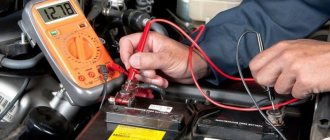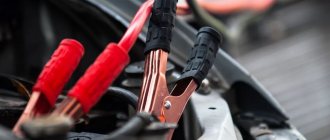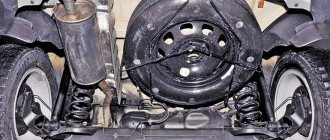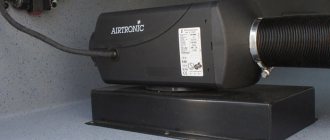Today, many people have to spend a significant part of their time driving. A correctly seated position behind the wheel allows you not to get tired on the road and makes it possible to quickly respond to changes in the road situation.
A poorly adjusted driver's seat not only increases the load on the driver's spine, but also reduces the viewing angle. Incorrectly positioned hands on the steering wheel of a car slow down steering in an emergency. Mandatory conditions for a comfortable and safe trip: the torso is not tense, the arms and legs are positioned so as not to make unnecessary movements.
Seat adjustment
Seat adjustment ensures a comfortable position for the driver depending on his weight and height. Proper driving position is ensured by choosing a comfortable distance between the seat, pedals and steering wheel. A comfortable distance implies the correct positioning of the legs - they should be slightly bent and can move freely between the pedals of the car.
Then the angle of the driver's seat backrest is set. Depending on the complexity and duration of the trip, it is chosen 90° or 75°. In any case, tight contact of the driver’s back with the seat back is necessary. It is equally important to adjust the height of the headrest. It should be located at the level of the back of the head.
Checking the seat adjustment. If your hands reach the top of the car's steering wheel and your feet press the pedals freely, then everything is done correctly.
Gear shift
It should be noted that such manipulations are not required before each trip. Once you have adjusted the seat, backrest, steering wheel and mirrors to suit you, you will no longer need to carry out similar actions every time (adjustment may be necessary from time to time). However, before setting off, it is important to make several minor but extremely important algorithms that will significantly increase the service life of your car. Beginners need to memorize the following list of rules:
- if your car has a manual transmission, before starting the engine, make sure that the handle is in position P, or depress the clutch pedal;
- check the viewing angle in the mirrors (perhaps an unauthorized change in the position of the mirrors occurred during your absence);
- If the car is shared by 2 or more drivers, check and adjust the seat position individually for yourself.
Don't be afraid to be careful and attentive to the smallest details and oversights. It is important to accustom yourself to react to the slightest changes in comfort and safety as early as possible. Compliance with the above provisions will significantly increase your level of car controllability and improve safety. In the next article we will look in detail at the tips and rules on how to steer and operate a vehicle correctly.
Steering wheel adjustment
The next stage is to establish a comfortable position of your hands on the steering wheel by adjusting the steering wheel height and tilt. The ability to change the distance of the steering wheel from the driver’s seat is included in the list of mandatory options for almost any modern car.
Errors in adjusting the steering wheel of a car:
- It is installed low - your hands get less tired, but you cannot allow it to touch your knees and prevent your legs from controlling the pedals.
- Installed far away - your arms will be tense and get tired quickly.
- Installed too close, then it is difficult to control the movement of the car.
Article on the topic: Signs indicating the direction of movement along the lanes
Select the middle position when free rotation of the steering wheel is possible. In this case, the arms should be in a half-bent position, approximately 120°.
The adjustment is considered correct if the steering wheel does not cover the dashboard, and the hands holding the steering wheel in the middle position are located slightly below the shoulders.
Place your hands on the steering wheel
Often on the road a situation arises when you need to change the trajectory of a car as quickly as possible. A safe way out of a critical situation is ensured only by the correct position of your hands on the steering wheel. Experienced instructors recommend placing your hands on the steering wheel in the following position:
- right hand at 3 o'clock;
- left hand at 9 o'clock;
- the hands are slightly higher than the elbows.
Your fingers should tightly grip the rim of the steering wheel, but you shouldn’t strain your muscles too much - your hands will quickly get tired. If the steering wheel has a horizontal crossbar, your fingers rest on it. In this case, controllability improves and it is easy to make turns without taking your hands off the steering wheel.
An option is used when the arms are slightly shifted upward (2 o'clock and 10 o'clock positions). Then, without intercepting your hands, it will be safe to turn at an angle of less than 45°.
It is important for the driver to get used to the correct driving style without intercepting the steering wheel.
It is not recommended to post:
- hands diagonally (one at the top, the other at the bottom);
- both hands in the upper position;
- both hands in the down position.
Safety belt
Let's not lie: the level of seat belt use in our region is at a record low, while leading the table of road accidents. However, it should be remembered that the above adjustments to the position and adjustments to the correct fit will lead to nothing if this passive safety measure is not used. It is extremely important to know how to buckle up correctly so that the airbag volume sensors work correctly. So here's how to do it:
- the fastened belt should not come into contact with the throat;
- the fastened belt should go diagonally from the shoulder across the chest to the thigh;
- fix the driver/passenger to the seat (you should feel pressure, but without fanaticism);
- The fastener clip must hold the belt latch even under severe force.
Seat belts should not press the torso too much and press them against the seat, but it is advisable to feel the tension.
Position of feet on pedals
We checked the position of our hands on the steering wheel, now we are learning how to correctly place our feet on the pedals. The main condition is that when driving, the legs do not “wander” along the floor of the body. When you move your foot from one pedal to another, lifting it off the floor, the center of gravity may shift, and control will deteriorate accordingly. For a driver with little driving experience, this is doubly dangerous: a mistake is possible when choosing a pedal (instead of the brake, the gas is pressed).
Article on the topic: How a thermostat works
The best option is to place the foot of the right foot between the gas-brake pedals. Control is performed by turning the foot to the left or right, without lifting the heel from the floor. This position is the most convenient for safe control. The brake-clutch pedals require increased effort when pressed, so they are pressed with the middle part of the foot.
A car with an automatic transmission (automatic transmission) does not have a clutch pedal; instead, there is a rest for the left foot. Control of the brake and gas is performed in the same way as for a car with manual transmission, with the right foot.
Sit down and buckle up
Knowing how to sit behind the wheel correctly will not help if you do not wear a seat belt while driving. Most cars have an airbag. The volume of all airbags, when deployed, is calculated based on the condition that the passenger is not only fastened with a seat belt, but did it correctly.
So, correct, this means that the belt:
- runs along the entire chest from the shoulder down;
- never appears near the throat;
- presses the torso tightly to the chair (but does not compress the chest too much);
- is securely held in place by a latch.
Checking preparation for movement:
- sit on the seat;
- fasten your seat belt;
- clarify the distance of the steering wheel from the driver’s hands;
- check the ability to quickly control the car pedals.
If necessary, the installation of the driver's seat must be adjusted.
Correct driver position behind the wheel of a car
So, what driving position is considered acceptable? The driver needs to be behind the wheel in such a position that his back is completely flat - to do this, the back of the seat must be fixed at an angle of 90 to 110 degrees. Between the knee joint and the seat cushion, it is necessary to maintain a distance that is approximately equal to the length of the palm - this is necessary to locate the center of gravity on the seat, and not on the weight. At the moment of squeezing the clutch, the leg should be almost straight, to its full length.
Adjusting the mirrors plays a role in proper seating. External rear view mirrors should be positioned so that the slightest turn of the head reveals the maximum viewing angle.
No need to lean over the steering wheel - this only worsens visibility. In addition, your forearms will begin to become stiff, and your hands will not be able to fully perform the necessary actions.
Everything seems pretty simple. However, drivers often feel uncomfortable behind the wheel and do not follow the rules. An example can be given when a driver drives a car, leaning over the steering wheel, seemingly knowing that doing so is not recommended. This position constrains the driver’s forearms, which does not allow the hands to move freely (in this case, to make a full turn of the steering wheel). This error often occurs because the driver is trying to improve visibility by leaning over. But he, thereby, only interferes with himself and makes things worse. In addition, the head should be positioned with the crown up so that the vestibular apparatus is as sensitive as possible.
Correctly selected chairs
Almost every car seat manufacturer claims that the design of the seat is not harmful. After all, this is so. By setting the seat correctly, you can forget and not worry about your back, because your muscles will always be relaxed and you can easily cover long distances. Thanks to this, the driver’s vigilance increases, and he concentrates better on the road.
Correct contact is considered if the car owner's back fits tightly to the seat. Most motorists make a grave mistake when they hang on the steering wheel, or when they raise the seat high, which allows them to support only their back. Because of this, a large load is placed on the spine, which is harmful to health. If you do not react in time and do not correct the mistake, then after a while you can get radiculitis or osteochondrosis. When correctly positioning the seat, the driver's back should be in contact with it in three places. The following parts of the body should fit snugly against the back of the chair:
· lower part of the neck;
· lower back;
· scapula.
This position is very important for your back, but not only, thanks to it you will be able to remain in the driver's seat during any turns, and will not slide out. You will also have a better feel for the road surface. Don't forget that your feet must be positioned correctly. The seat should not be close to the steering wheel, as in this position it will touch the legs. Because of this, you will have to keep your legs bent. But if you can fully depress the clutch without difficulty, then this seat position is considered ideal.
The most common mistakes
- The driver sits in such a way that he is too close to the steering wheel. In driver's slang they say about such people: “chewing a bagel.” For some reason, many people think that the road is better visible this way. Why is such a landing bad? In this position, the driver has to strongly bend his legs and arms, which limits freedom of action. In a critical situation, you simply may not have time to react. In addition, with such a landing, the muscles of the neck and back are very tense. By the end of the trip - especially if it is long - you will most likely feel completely "broken."
- The driver leans back strongly in the seat - practically lies in it. It would seem very convenient! Nothing like this. You will be forced to constantly pull yourself forward while holding the handlebars. The main load falls on the muscles of the arms - after all, the back no longer rests against the back of the chair. As a result, the speed and accuracy of the reaction decreases. My hands get tired. And the road in this position is much less visible.
- Another fairly common mistake is the habit of holding your hands in the lower sector of the steering wheel and squeezing it with a “death grip”. This may seem convenient, but in this position the angle of rotation of the steering wheel is limited.
The Importance of Proper Fit
Proper landing has several important aspects. First of all, of course, the professional aspect. Thus, the driver’s performance and the ability to quickly make adequate decisions in situations that arise while driving depend on the correct posture. An illiterate landing, on the contrary, will contribute to his fatigue, poor visibility of the road, etc., which is fraught with unwanted complications, including an accident.
In other words, human safety directly depends on posture. Besides everything, she gives him the necessary comfort. There is also a purely medical factor at work. The fact is that incorrectly sitting behind the wheel, especially if the trip is long and long, has a negative impact on a person’s well-being and can provoke an increase in his blood pressure and an exacerbation of other ailments, for example, cervical osteochondrosis. The purely psychological factor cannot be rejected either. Thus, the driver’s uncertain posture, which does not allow him to drive the car clearly, automatically affects the mood of the passengers.











